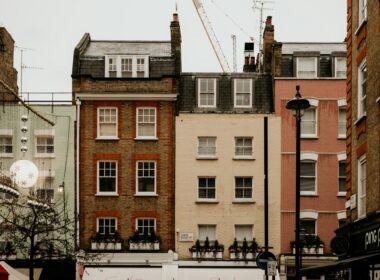As global luxury real estate markets cool, one city stands out for bucking the trend: London. While the world’s most sought-after cities saw a dip in super-prime property sales—those priced above $10 million—London emerged as a rare bright spot in Knight Frank’s latest quarterly report.
Across 12 key global cities, just 406 luxury properties were sold in the three months to September 2024, a noticeable drop from the 496 sales in the previous quarter and the 464 recorded in the same period last year.
The United States, typically a powerhouse for ultra-high-end real estate, is feeling the pinch, with none of the five American cities studied reporting quarter-on-quarter growth. Palm Beach posted its lowest sales figures since late 2022, and Miami saw a staggering 60% decline compared to Q3 2023. The uncertainty surrounding the upcoming US election is casting a long shadow, as buyers hesitate in the face of political ambiguity.
Dubai, meanwhile, is entering a more sustainable growth phase following its pandemic-era boom. While the city still outpaces its historical averages with 83 sales this quarter, it marked a nearly 40% year-on-year drop.
London’s luxury property market is still resilient
In stark contrast to its global peers, London saw a slight increase in super-prime property sales, recording 51 transactions—up from 47 in the previous quarter. While modest, this growth is significant: it’s the first quarterly increase since Q3 2023 and suggests that buyers are moving quickly to finalise deals before any potential tax changes from the new Labour government.
However, London’s recovery is far from complete. The city’s current sales figures pale in comparison to its post-pandemic boom, when quarterly super-prime sales regularly exceeded $1.5 billion. In 2024, no quarter has yet breached the $1 billion threshold, a stark reminder of the market’s lingering challenges.
Dubai remains a powerhouse for luxury real estate, even as its pace slows. Over the past 12 months, the city’s super-prime sales have tripled compared to 2021 and more than doubled against 2022 figures. Still, its Q3 sales slump highlights a shift toward more sustainable growth—a recalibration after years of frenetic activity.
The US luxury market is in a holding pattern, with buyers seeking clarity amid political uncertainty. Los Angeles and New York City showed some year-on-year improvement, but both markets failed to achieve quarter-on-quarter growth.
Palm Beach, a perennial favourite among the ultra-wealthy, has yet to see its seasonal upswing, while Miami’s dramatic decline suggests that even established hotspots are not immune to market forces.
The global super-prime market may be cooling, but London’s resilience offers a glimmer of hope. As other cities grapple with political and economic uncertainties, the UK capital’s ability to attract high-net-worth buyers underscores its enduring appeal as a haven for luxury investment.
For now, the question remains: will London’s steady climb continue, or is it merely a temporary reprieve in an otherwise cooling global market? As 2024 winds down, all eyes are on how these cities adapt to shifting tides.




